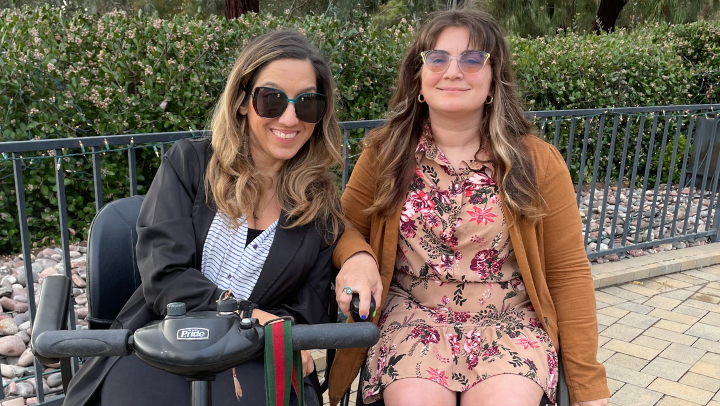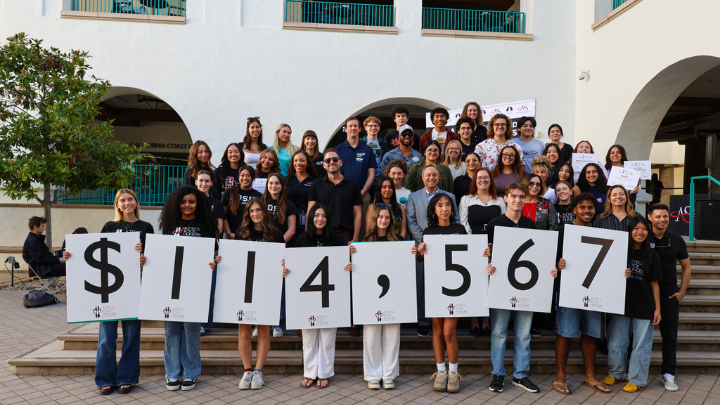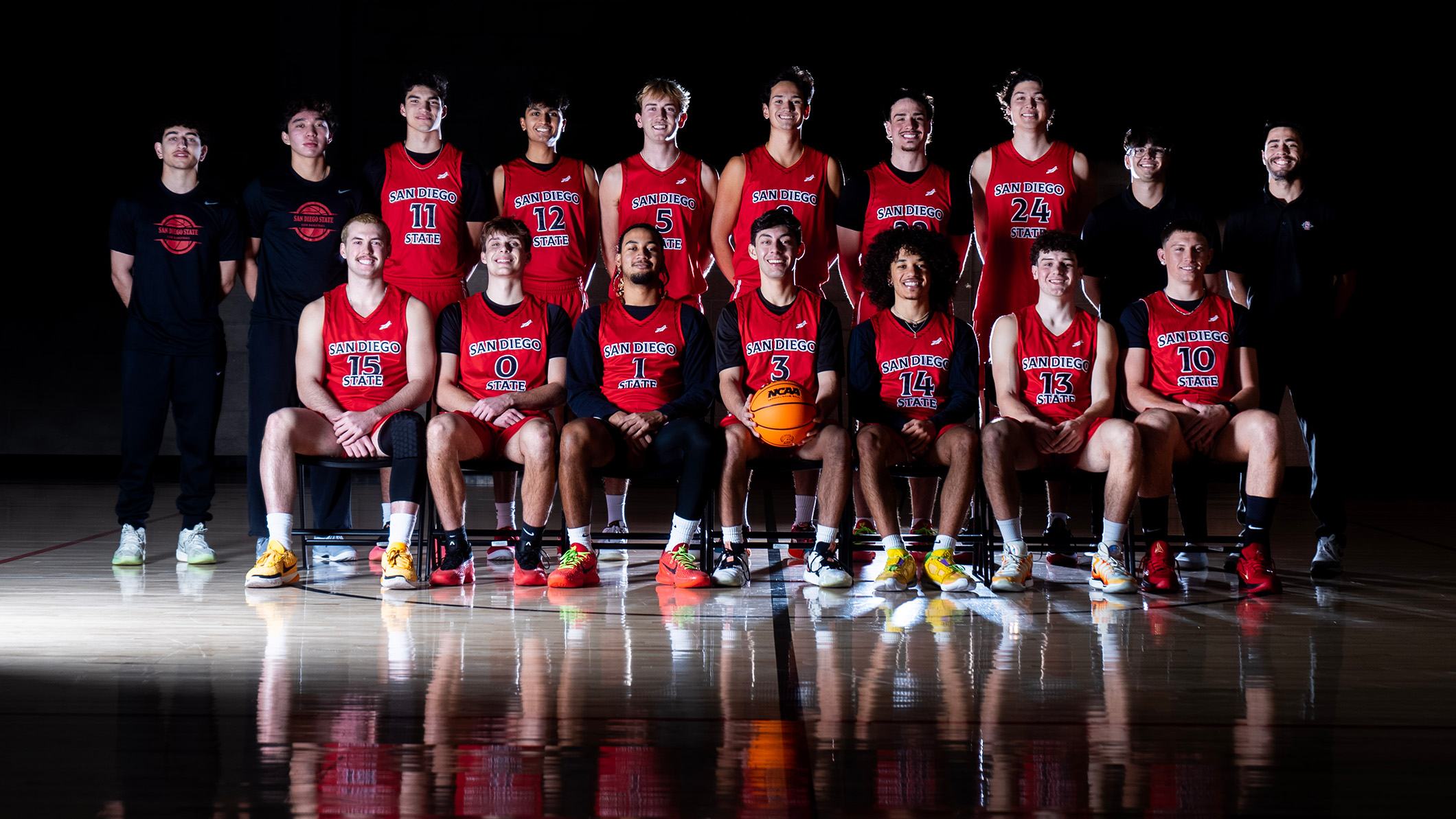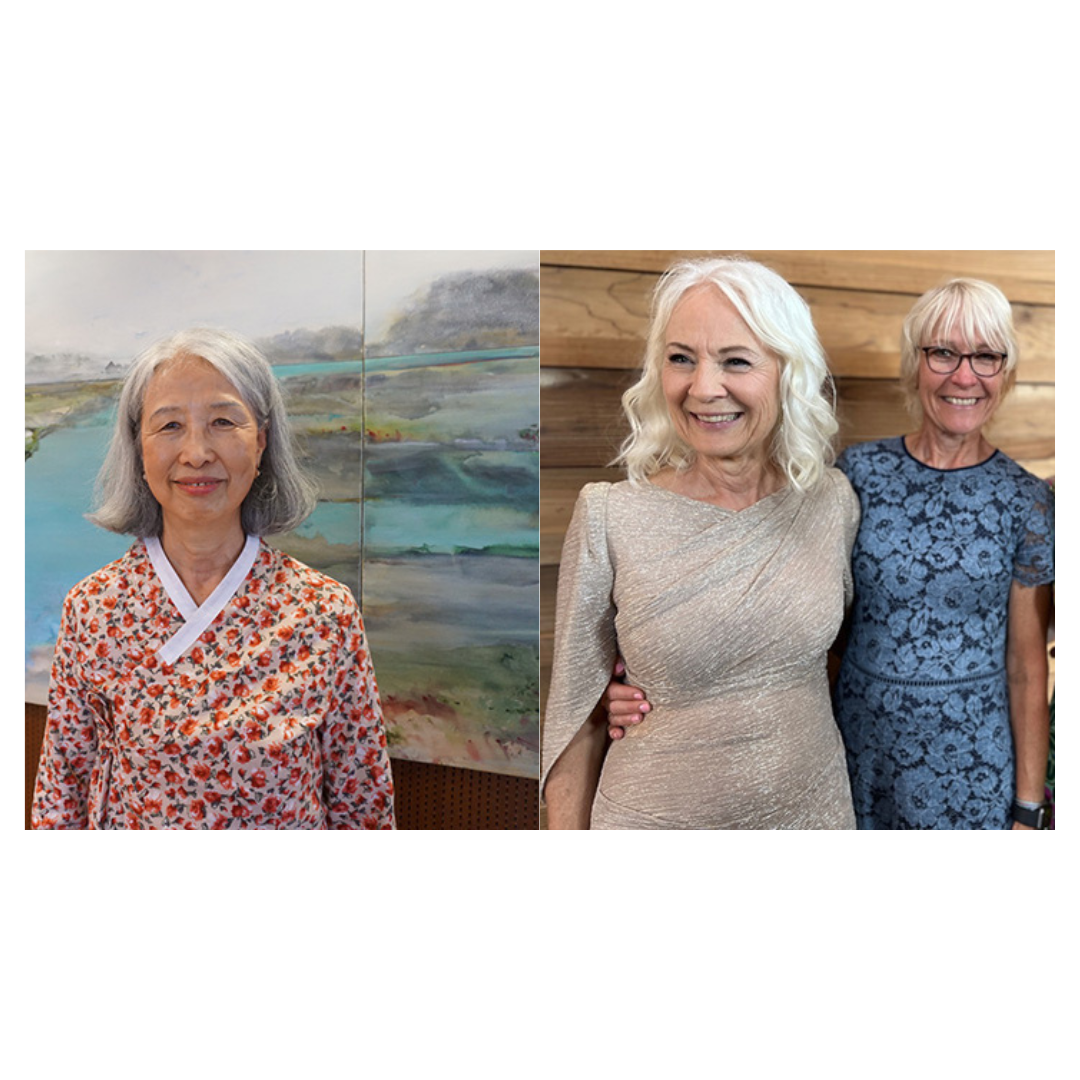'A long way to go’: Disability rights experts reflect on the ADA at 35
SDSU’s Toni Saia and Gabrielle Ficchi say the landmark law set an important baseline for accessibility — but progress shouldn’t stop there.

Editor’s note: Reflecting the preference of the interviewees, this article uses identity-first language (disabled people) instead of person-first language (people with disabilities).
Toni Saia and Gabrielle Ficchi are too young to remember the momentous events of July 26, 1990, when President George H.W. Bush signed the Americans with Disabilities Act (ADA) in a ceremony on the South Lawn of the While House.
But as proud disabled women and disability activist-scholars, they know they are the living legacy of the many activists who worked tirelessly to pass the civil rights legislation prohibiting discrimination in employment, civic life and everyday activities.
Saia, who was recently promoted to associate professor in the Department of Administration, Rehabilitation and Postsecondary Education, teaches in SDSU’s rehabilitation counseling master’s program (ranked No. 7 in the nation by U.S. News & World Report). She is also co-chair of SDSU's Disability Employee Resource Group.
Ficchi, a lecturer in the rehab counseling distance program, lives in Arizona where she is a licensed therapist and certified rehabilitation counselor. She runs New Perspectives LLC, her therapy practice, and Care 4 the Caregivers, a nonprofit that supports the mental health needs of individuals and families in the disability community.
On the eve of the ADA’s 35th anniversary, the SDSU News Team caught up with them to discuss the legacy of the law, Disability Pride and what should come next.
What does the 35th anniversary of the ADA mean to you?
Saia: I think 35 years is a time where you can think critically about how far we've come, but also acknowledge that we still have a long way to go. It's an opportunity to honor the cross-disability movement that was at the front lines fighting for its passage. But 35 years later, there are still places and spaces where disabled people do not have access. So I think it's really important to see it as both.
Ficchi: For me, as a disabled woman, it means that I have a right to show up. The U.S. is one of the only places in the world that has disability legislation like this, so I think it's really something to celebrate. But like Toni said, we have to fight for these rights constantly. And as grateful as I am that these rights exist, we are still fighting to justify our place in society every day. And while we are the largest minority in the world, we are chronically underrepresented in civil rights spaces.
In what areas does the ADA fall short?
Saia: The ADA sets the bare minimum requirements for accessibility. We shouldn’t be aiming for the bare minimum for disabled people. Oftentimes, when disabled people are fighting for their rights or advocating, we often hear, ‘Well, there's an ADA.’ But there is no enforcement of it — the burden (for accomodation) is on disabled people. And just because something is ADA compliant, that doesn't mean it's going to be usable. What’s more, the existence of the ADA does not guarantee a culture of disability pride. That’s where there needs to be a distinction.
On that note, July is Disability Pride Month. What is Disability Pride and why is it important?
Ficchi: I was born with my disability and, for the first years of my life, a cure model was pushed by very well-meaning people who thought they were doing the best things for me. But embracing Disability Pride meant accepting myself the way that I am. The Pride movement gives disabled people the opportunity to love themselves — to be proud to show up as a disabled person in this society. Once I really understood our history, where we came from, and what people had to do to put me in the position that I'm in, I was really able to adopt a Disability Pride model. Now it's part of everything I do. Our focus doesn't have to be a cure. It just has to be living a fulfilled life. And that's completely possible.
Saia: The biggest change in my experience with Disability Pride has been coming to the understanding that I am not the problem — society is the problem. I am mingling in a world that is not designed for me. The more we can understand that for the students, faculty and colleagues that we work with, we help shift that burden and create that culture of embracing Pride. I want folks reading this to reflect on what they can do to create environments for people to embrace disability.
So what needs to happen now to build on the ADA?
Ficchi: I think we have the opportunity now to continue to cement our place in society and I think the next step is universal access.That means designing and implementing things to accommodate the largest number of people instead of doing it case-by-case. The biggest example of universal design I see all the time is a push button next to a door. That's not just for a disabled person, that's for somebody who's carrying their groceries or pushing a stroller. It’s thinking from the start about how we can accommodate everybody, universally.
Saia: The number one thing that comes to my mind is that disabled people need to be leading conversations. They need to be making policy. They need to have opportunities to be the leaders. So often disabled people are invited to the table afterwards, but we need to be the ones building the table. I use the platform of my classroom to show disabled students and other students that disabled people can and should lead. I encourage everybody to imagine a world where disabled people can lead and thrive.



